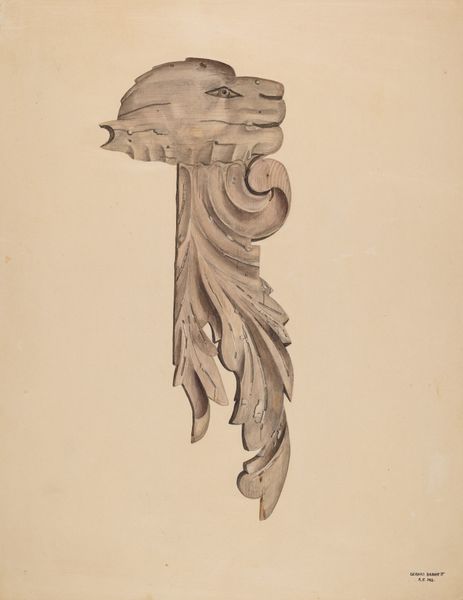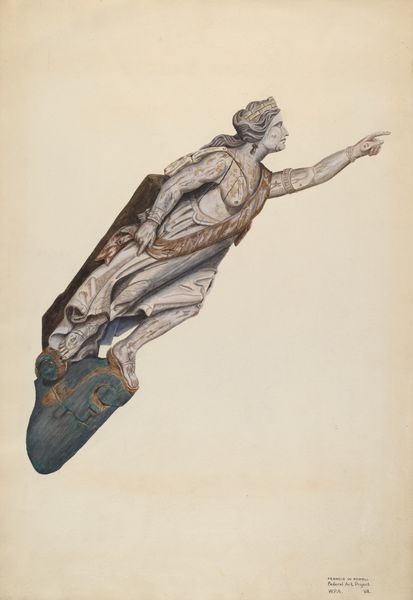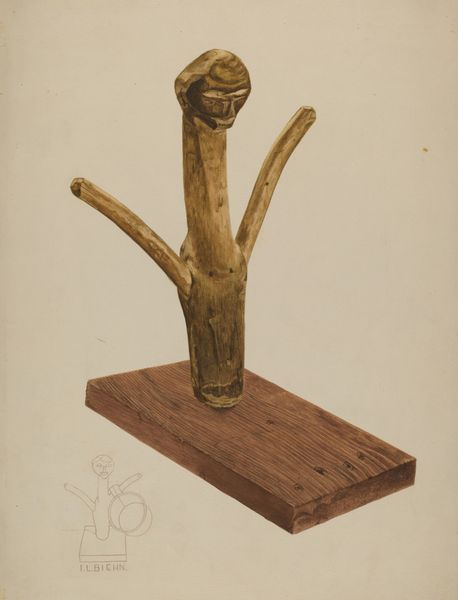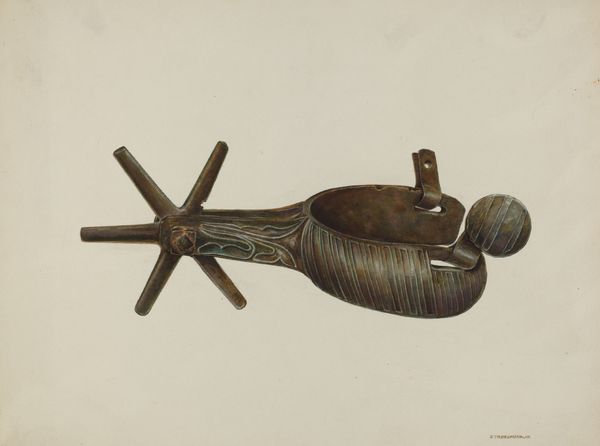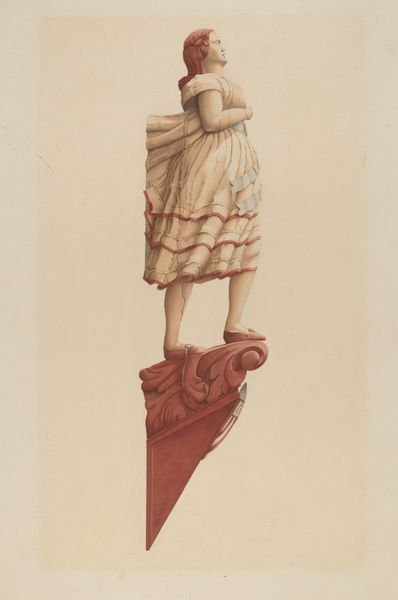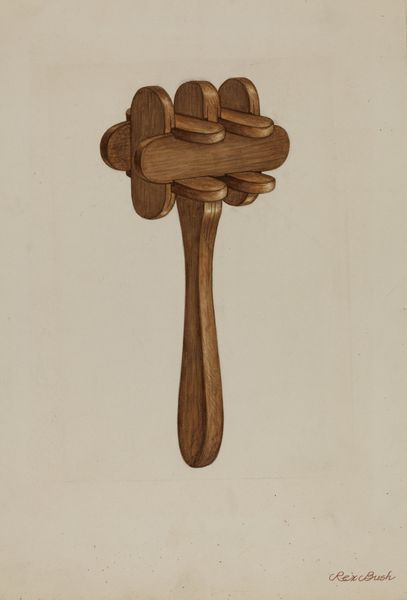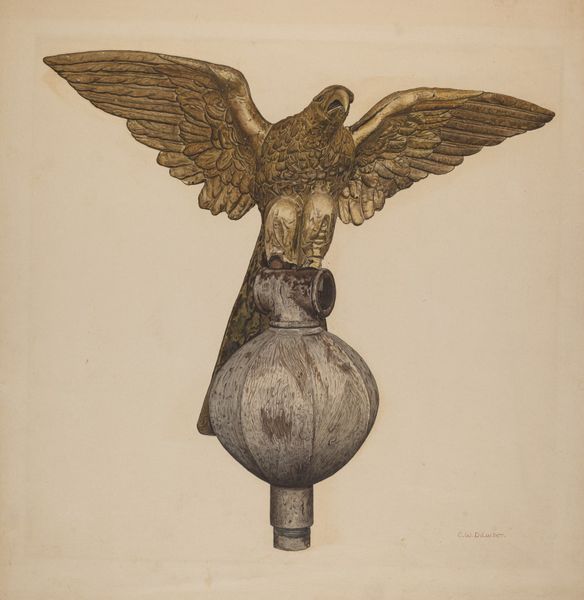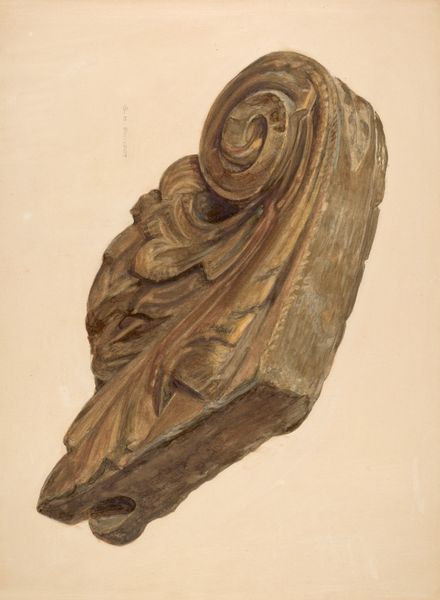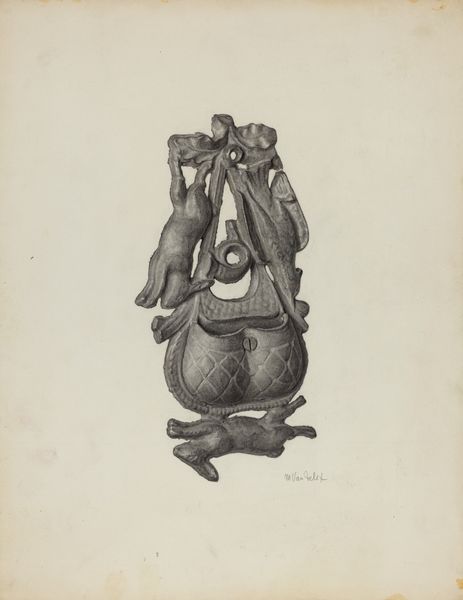
drawing, watercolor
#
drawing
#
charcoal drawing
#
form
#
watercolor
#
realism
Dimensions: overall: 51 x 38 cm (20 1/16 x 14 15/16 in.) Original IAD Object: 30" high
Copyright: National Gallery of Art: CC0 1.0
Curator: I find this depiction of physical exertion quite compelling; the piece is called "Gold Beater's Sign" by Elmer G. Anderson, created around 1938. Editor: The realism is striking! The muscle definition is intense, and the arm is realistically weathered. It gives you a clear idea of repetitive motions and great effort. Curator: Anderson was known for depicting industrial labor, and this work encapsulates that interest, it served as the emblem for shops specialized in gold beating during this time. These were highly skilled artisans. Gold beating required immense strength. The sign itself acted as a representation of labor's crucial contribution to economic activities. Editor: Look how the artist highlights form here. Note the tonal modulations. The subdued palette draws focus to textures—the roughness of the hand contrasts against smoother tool. It makes me think about the haptic qualities of work and the labor it requires. Curator: These signs became potent symbols, representative not just of the craft, but of worker's identity and social place within communities. Many labor movements used related imageries around this time. The strong arm, the hammer – the tools of their trade – are their mark of identity, almost an affirmation of who they were and the importance of work that sustained everyone during those times. Editor: Absolutely, but observe how that realism lends it such narrative impact. It transforms simple craftsmanship to epic endeavor. The figure fills space – visually communicating significance way past literal. This sign, made from watercolors and charcoal, celebrates labor through powerful representation. Curator: It is so powerful how Anderson could celebrate something as everyday as physical work. Its legacy calls to attention an evolving and rich social history. Editor: It does – the artwork turns mere labor to art, elevating work through the artist’s keen understanding and sensitive depiction. It encourages a profound view of those frequently left unregarded.
Comments
No comments
Be the first to comment and join the conversation on the ultimate creative platform.
